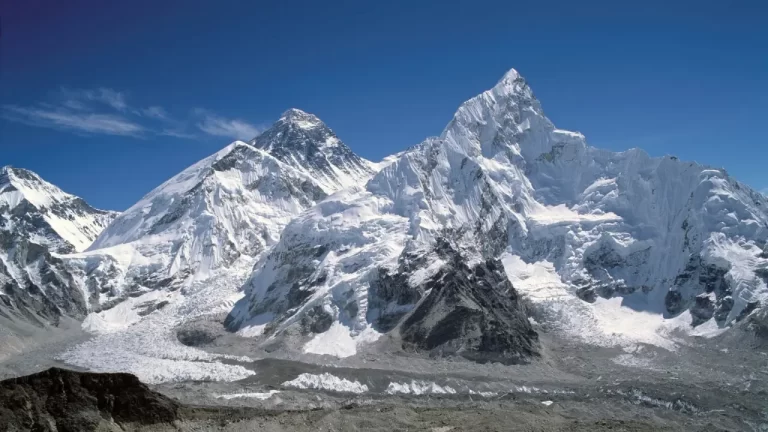Estimated reading time: 7 minutes
The Equator, a seemingly simple line circling the globe, holds a wealth of geographical significance for those preparing for competitive exams like UGC NET, UPSC, and state-level PSCs in Geography. Understanding its implications is crucial for interpreting climate patterns, ocean currents, and even cultural variations. This article delves into the key facts about the Equator, its influence on our planet, and why it’s a must-know topic for aspiring geographers and civil service candidates.
Table of contents
What is the Equator?
The Equator is an imaginary line drawn around the middle of the Earth, dividing it into the Northern Hemisphere and the Southern Hemisphere. It is located equidistant from the North Pole and the South Pole. This line is crucial for navigation and geography as it represents 0 degrees latitude. The Equator is not just a geographical concept but also plays a significant role in climate patterns, ecosystems, and even cultural practices in the regions it passes through.
Important Facts About the Equator
- The Equator is an imaginary line that circles the Earth at its widest point. This line is essential for understanding Earth’s geography and climate. It helps in dividing the Earth into two equal halves, providing a reference point for measuring latitude. The concept of the Equator is fundamental in navigation, meteorology, and even in understanding time zones.
- The Earth bulges slightly at the Equator, making its diameter there about 12,756 kilometers (7,927 miles), which is 43 kilometers (27 miles) more than the diameter measured from pole to pole. This bulge is due to the Earth’s rotation, which causes the planet to flatten at the poles and bulge at the Equator. This phenomenon affects everything from gravity to satellite orbits.
- Locations near the Equator are ideal for space launch sites because the rotational speed of the Earth is highest there, reducing the amount of fuel needed for launches. This is why many space agencies, including NASA and ESA, prefer equatorial launch sites. The increased rotational speed provides an extra boost to rockets, making launches more efficient and cost-effective.
- It is also called the “Equatorial Line” or “Equatorial Circle.” These terms are often used interchangeably in scientific literature and everyday language. The Equator is a key reference in many scientific studies, including those related to climate change, ocean currents, and biodiversity. Its significance extends beyond just being a line on a map.
- The Equator is about 40,075 kilometers (24,901 miles) long. This makes it the longest line of latitude on Earth. The vast length of the Equator means it passes through numerous countries and diverse landscapes, from dense rainforests to vast oceans. This diversity makes the Equator a fascinating subject of study for geographers and scientists.
- The highest point on the Equator is on the southern slope of the Cayambe volcano in Ecuador, at 4,690 meters (15,387 feet). This unique location is one of the few places where you can experience snow on the Equator. The high altitude and equatorial location create a rare and fascinating environment, attracting scientists and tourists alike.
- At the Equator, day and night are approximately equal in length throughout the year. This phenomenon occurs because the Equator receives consistent sunlight year-round. This results in a stable climate with minimal seasonal variation, making equatorial regions unique in terms of weather patterns and biodiversity.
- The Equator is at 0 degrees latitude. This makes it a crucial reference point for geographers and navigators. Latitude lines run parallel to the Equator and are used to determine the location of places on Earth. The concept of latitude is essential for mapping, navigation, and understanding Earth’s geography.
- The sun is directly overhead at the Equator on the equinoxes, around March 21 and September 23. These dates mark the beginning of spring and autumn, respectively. During the equinoxes, the sun’s rays hit the Equator at a 90-degree angle, resulting in nearly equal day and night lengths worldwide. This phenomenon is celebrated in many cultures with various festivals and rituals.
- The Equator experiences high temperatures year-round, but it is not the hottest place on Earth due to high rainfall and humidity. The consistent sunlight results in warm temperatures, but the frequent rain and cloud cover help moderate the heat. This creates a unique climate that supports diverse ecosystems, including rainforests and tropical savannas.
- Most of the Equatorial region is covered by oceans. This vast expanse of water plays a crucial role in regulating the Earth’s climate. The warm equatorial waters drive ocean currents and weather patterns, influencing climates far beyond the Equator. The marine ecosystems in these regions are also incredibly diverse and vital for global biodiversity.
- The closest country to the Equator without touching it is Peru in South America. Despite not being on the Equator, Peru’s proximity to this line influences its climate and biodiversity. The country’s diverse landscapes, from coastal deserts to Andean highlands, are shaped by their location near the Equator.
- Despite its name, no part of Equatorial Guinea lies on the Equator. Its island of Annobón is 155 kilometers (96 miles) south of the Equator. The country’s name reflects its geographical proximity to the Equator, but its actual location is slightly to the north. This naming convention highlights the historical and cultural significance of the Equator in the region.
Countries Located on the Equator
- Ecuador (South America)
- Colombia (South America)
- Brazil (South America)
- São Tomé and Príncipe (Atlantic Ocean, Africa)
- Gabon (Africa)
- Republic of the Congo (Africa)
- Democratic Republic of the Congo (Africa)
- Uganda (Africa)
- Kenya (Africa)
- Somalia (Africa)
- Maldives (Indian Ocean, Asia)
- Indonesia (Asia)
- Kiribati (Pacific Ocean)
Why is the Coriolis Force Zero at the Equator?
The Coriolis force is a fictitious force caused by the Earth’s rotation. At the Equator, the rotational speed of the Earth is highest, resulting in zero Coriolis force. This is because the Coriolis force depends on the rotational speed and the sine of the latitude. Since the Equator is at 0 degrees latitude, the sine of 0 is zero, making the Coriolis force zero. This lack of Coriolis force affects weather patterns and ocean currents, making equatorial regions unique in terms of climate and environmental dynamics.
Test Your Knowledge with MCQs
1. What is the Equator?
a) A line of 0° longitude
b) A line of 0° latitude
c) The Tropic of Cancer
d) The International Date Line
2. Which of these is NOT a country directly crossed by the Equator?
a) Kenya
b) Maldives
c) Peru
d) Gabon
3. The Earth’s diameter is…
a) Equal at the poles and the Equator
b) Larger at the Equator
c) Larger at the poles
d) None of the above
4. Why are space launch sites often located near the Equator?
a) Higher gravity
b) Less atmospheric interference
c) Earth’s rotational speed is highest
d) Closer proximity to the stars
5. The Coriolis force is zero at the Equator because…
a) The Earth is not rotating there
b) Latitude is 0°
c) Gravity is stronger
d) Magnetic fields cancel it out
6. Which volcano has a point on its slope that is the highest elevation on the Equator?
a) Mount Kilimanjaro
b) Mount Everest
c) Chimborazo
d) Cayambe
7. Day and night are approximately equal in length throughout the year at the Equator due to…
a) Earth’s axial tilt
b) Consistent sunlight
c) The moon’s gravitational pull
d) Ocean currents
8. The Equator is the longest line of…
a) Longitude
b) Latitude
c) Altitude
d) None of the above
9. Despite its name, which country does NOT actually touch the Equator?
a) Equatorial Guinea
b) Ecuador
c) Colombia
d) Brazil
10. The Equator influences climate primarily by…
a) Determining wind patterns
b) Affecting ocean currents
c) Controlling rainfall distribution
d) All of the above
Answers: 1(b), 2(c), 3(b), 4(c), 5(b), 6(d), 7(b), 8(b), 9(a), 10(d)
FAQs
The Coriolis force, caused by Earth’s rotation, is zero at the Equator because the Equator (0° latitude) has the highest rotational speed. The Coriolis force is proportional to the sine of latitude, and sin(0°) = 0. This absence affects weather patterns and ocean currents near the Equator.
The Equator passes through 13 countries: Ecuador, Colombia, Brazil, São Tomé and Príncipe, Gabon, Republic of the Congo, Democratic Republic of the Congo, Uganda, Kenya, Somalia, Maldives, Indonesia, and Kiribati. These countries experience unique geographical and climatic conditions due to their equatorial location.
Launching rockets from sites near the Equator is advantageous due to Earth’s higher rotational speed there. This provides an additional boost to rockets, reducing the fuel required to achieve orbit and making launches more cost-effective.





























